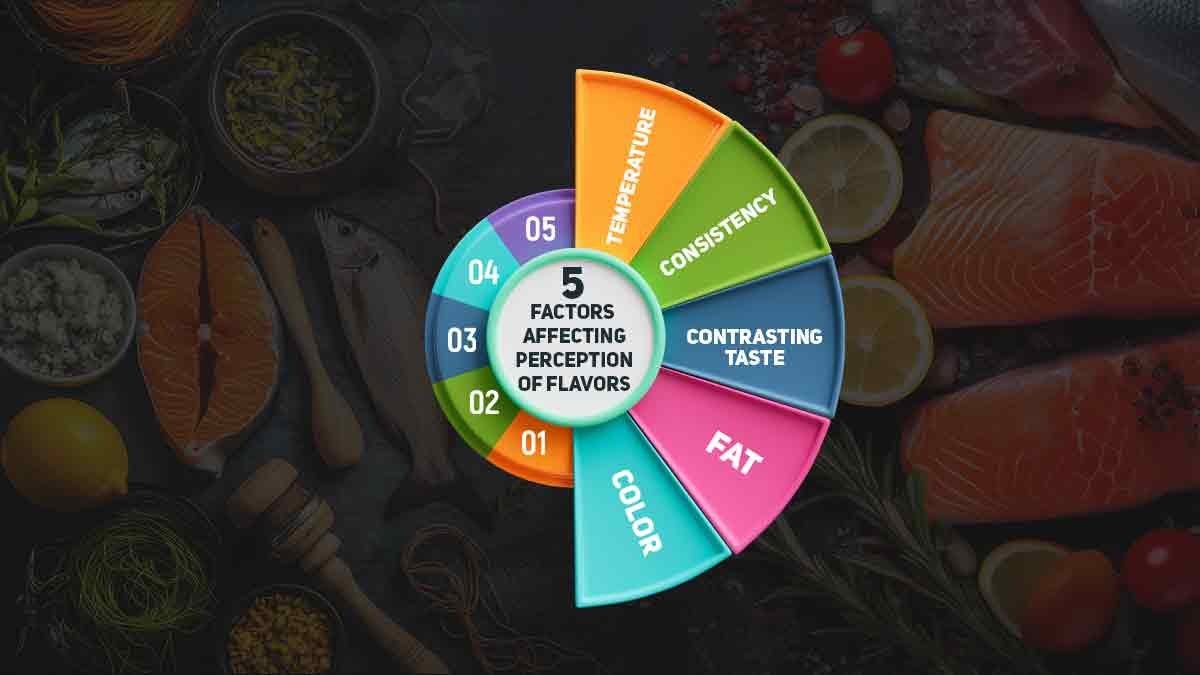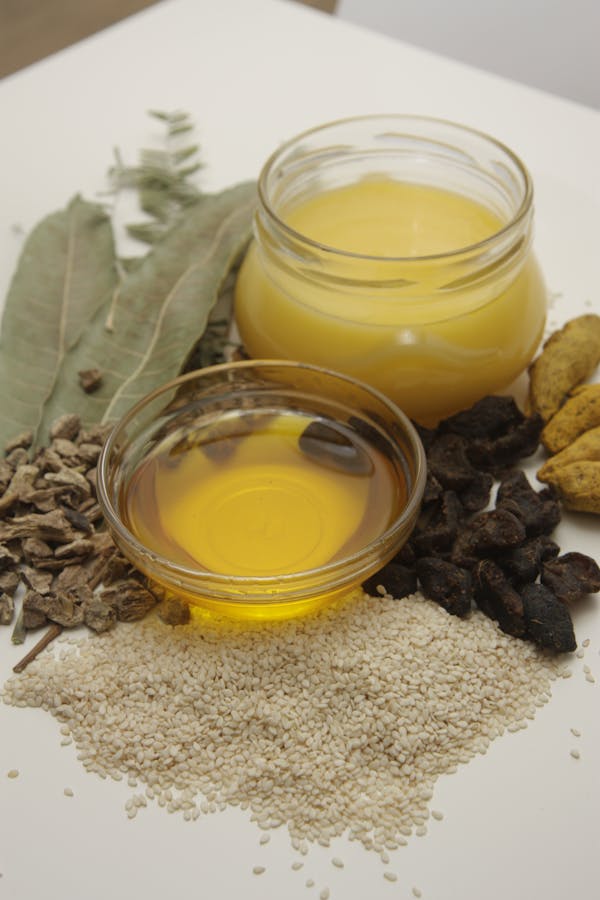
5 Factors Affecting Perception of Flavors
The most important factors that affect the flavor of a dish are the quantity, quality, and concentration of the flavoring ingredients. (With practice, a chef acquires a sense of the proper proportions.) Other factors that influence our perception of flavors include the following:
Temperature
The higher the temperature of the food, the stronger the flavor. Hot tea expresses more flavor compounds than iced tea or room-temperature tea. Hot food releases aromatic compounds, which intensify our perception of odors. Cold foods and drinks dull taste by constricting protein channels within the taste buds. Foods lose their sour or sweet taste, both cold and warm.

However, saltiness is perceived differently at very cold temperatures. The same amount of salt in a solution is perceived more strongly when very cold than when cold or warm. For these reasons, it is best to adjust the final flavors of a dish to its serving temperature. Season food that will be served hot and food that will be served cold.
Consistency:

Consistency affects a food’s flavor. Two items with the same amount of taste and smell compounds that differ in texture differ in perceived flavor intensity; the thicker item will take longer to reach its peak intensity and will have a less intense flavor. For example, two batches of sweetened heavy cream made from the same ingredients in the same proportions may taste different if one is whipped and the other is unwhipped; the whipped cream has more volume and therefore a milder flavor.
Contrasting taste:

Sweet and sour are considered opposites, and often the addition of one to a food dominated by the other will enhance the food’s overall flavor. For example, adding a little sugar to vinaigrette reduces the dressing’s sourness; adding a squeeze of lemon to a broiled lobster reduces the shellfish’s sweetness. Similarly, adding something sweet, sour, or salty to a dish with a predominantly bitter flavor will cut the bitterness, but add too much contrasting flavor and the dominant taste will be negated.
Fat:

Many of the chemical compounds that create tastes and aromas are dissolved in the fats that naturally occur in foods or are added to foods during preparation. As these fat compounds are slowly released by body heat or saliva, they provide a sustained taste sensation. If there is too little fat, the flavor compounds may not be released efficiently, resulting in a dish with little sustained flavor.
This is one reason that low-fat and reduced-fat products, such as salad dressings, yogurt, or sour cream, can seem tasteless. Too much fat poses another problem; it can coat the tongue and interfere with the ability of taste receptors to perceive flavor compounds.
Color:
A food’s color affects how we perceive flavor before we even taste the food. When foods or beverages lack their customary color, we are less able to correctly identify them than when they are appropriately colored. As color level changes to match our expectations, our perception of taste and flavor intensity increases. A miscue created by color can have an adverse impact on the consumer’s appreciation of flavor. For example, if the predominant flavor of a dessert is lemon, the dessert or some component of the dessert should be yellow.

A green color triggers an expectation of lime and possible disappointment of the consumer. Similarly, the dark ruby-red flesh of a blood orange looks different from the more common bright orange flesh of a Valencia orange. This color difference can create the expectation of a different, non-orangey flavor, even though the blood orange’s flavor is similar to that of other orange varieties. Likewise, a sliced apple that has turned brown may suggest an off-flavor, although there is none.
The key is the perception and appreciation of saltiness. What one person considers extremely salty may be ideal for someone else. And, over time, taste adapts to the level of saltiness in a food. Continued exposure to highly salty foods increases salt tolerance. Similarly, a person can, over time, develop an appreciation for less salty foods by reducing the amount of salt consumed.
The sense of taste can be challenged by factors both within and outside of one’s control. Age and general health can reduce one’s perception of taste, as can fatigue and stress. As we age, our sense of taste and smell naturally decline, although this varies from person to person. Overall health also affects our perception of taste.
A head cold can suppress our ability to smell because mucus blocks the flow of scents to our nasal receptors, but the ability to perceive basic tastes on the tongue may not be affected. Some medications can interact with basic tastes, increasing or decreasing the ability to taste salty or bitter compounds. Smoking has an immediate negative impact on the ability to taste and smell food, but scientific evidence suggests that the sense of taste can recover after a few hours. Chefs need to be aware of the age and health of their customers, adjusting the seasoning of the food they are serving to suit their needs.